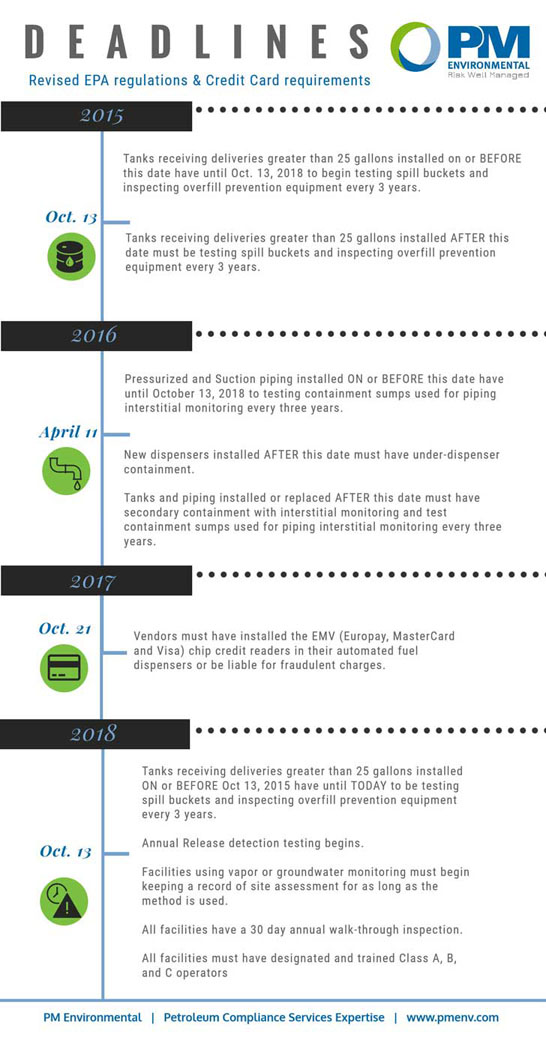Experts Corner: Petroleum Marketers and the Ticking Clock
The clock keeps ticking for petroleum marketers since the EPA’s revisions to the Underground Storage Tank Regulation (40 CFR Parts 280 and 281) in July of 2015 and the liability shift policy by U.S. credit card issuers in October of 2015.
The EPA’s revised regulations on the inspection, maintenance, and monitoring of Underground Storage Tanks and systems will affect all of the 577,981 active petroleum tanks in the United States. Using state data, the EPA concluded a facility averaged 3.07 tanks, or approximately 148,000 retail fueling sites in the US. Based on the estimated costs to implement the revisions, the cost per tank is approximately $232, or $715 per typical facility.
According to the EPA, avoided remediation costs associated with conventional UST systems form the majority of positive impacts from the final UST regulation. Estimates that the final UST regulation will avoid total costs of $310 million per year.
Credit Card Companies Shifting Fraud Responsibility
It isn’t only the EPA requesting changes, Visa, MasterCard, American Express and Discover will be shifting potential fraudulent charges to the vendors of origin. According to the National Association for Convenience & Fuel Retailing (NACS), 78 percent of fueling customers pay with credit card. In order to keep the fraud obligation on the credit card companies, vendors must have installed the EMV (Europay, MasterCard and Visa) chip credit readers in their automated fuel dispensers by October 21, 2017 or the retail establishment will be liable for fraudulent charges. The upgrade can cost anywhere from $6,000 to $10,000 per pump for the dispenser-side conversion. Many petroleum marketers question the ROI of switching to EMV-compliant terminals since the initial cash layout can be steep, especially for small operators.
New Pressures to Understand and Comply with Regulations
As the EPA State-approved programs improve the oversight of mandates for integrity and audit control, petroleum marketers are forced to fully understand the regulations as well as the performance requirements to be in compliance with the regulations, or suffer real repercussions. There is an increasing amount of documented cases of petroleum operators being prosecuted for civil and/or criminal fraud charges.
Some states have already implemented many of the EPA’s changes, while others are still working towards compliance. Regardless, the deadlines still loom. Below you’ll find a list of EPA changes and a timeline of due dates to keep up.


 About the Author
About the Author
Greg Stephenson, P.G. is a Principal and Vice President at PM Environmental, Inc. and has served clients throughout the U.S. for over 25 years. Stephenson has managed portfolios of projects during his tenure including environmental due diligence, corrective action design, remediation, acquisitions, divestitures, new to industry site development, wetland banking, SPCC, NPDES, Oil Water Separators, NEPA, FAA Audits, and environmental compliance and risk initiatives.
He has successfully achieved regulatory closure of hundreds of LUST sites through the Southeastern United States and Alaska.
Publication Details
Date
March 1, 2016



